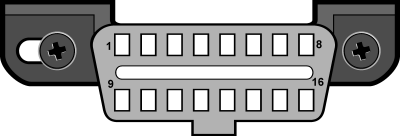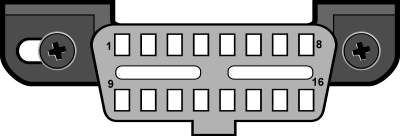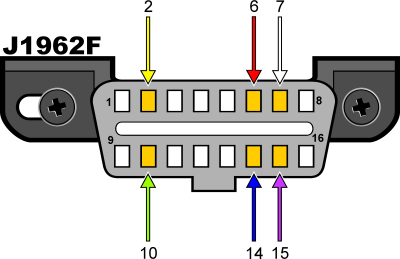On-board diagnostics (OBD) tends to be an automotive term discussing a vehicle’s self-diagnostic and confirming capability. OBD systems supply the vehicle owner or even repair technician entrance to the status of the many vehicle subsystems. Generally OBD-2 is very much perfect for each and every car. The OBD-2 code readers are an on-board diagnostic device utilized to detect automobile faults.
On-Board Diagnostics or OBD as it is more commonly referred to as is a term that is used to denote the ability of a vehicle to point out and analyze any kind of default that may be appearing in its system and its functioning. These systems can be incredibly beneficial since they enable the vehicle owner or the technician to easily figure out the discrepancies that are being faced by the vehicle, which can them lead to them finding a viable solution. Through these systems, individuals can get an array of diagnostic information which can improve the manner in which these vehicles function, and the care that one can take of them.
Through the years OBD systems have undergone a variety of changes, with the sole purpose of improving the functioning of this kind of device, and also to be able to provide more accurate readings which can enhance the manner in which a user takes care of his or her vehicle. Before technology developed, these systems worked on an incredibly basic level. The vehicle would have a simple indicator light that would turn on if there were any discrepancies in the vehicle. This of course presented some problems for those who were unfamiliar with their vehicle. For starters, the light indicator only worked to inform the driver that there was a problem with the car, and never outlined what the actual problem was. The individual would then have to go through the vehicle and try and figure out which part is malfunctioning.
The development of OBD has come a long way since its early days and now presents itself in the form of a new and improved version, which is denoted by OBD II. This digitalized version of the analysis tool can tell the driver exactly which part of the vehicle is facing problems so that they can take care of it at the earliest.
Quick Navigation
Does Your Vehicle Contain ODB-II?
Where is the connector located?
Location of ODB-2A:
Location of ODB-2B:
OBD-2 Protocols:
Which OBD-2 Protocol is supported by your Vehicle?
A Beginner’s Guide to OBD Scanners
Does Your Vehicle Contain ODB-II?
Definitely, Right after January 1, 1996 all vehicles and light trucks built and sold in America, were necessary to be OBD II outfitted. Generally, this implies most 1996 model season cars and light trucks are up to date, if built-in late 1995 even. OBD II was first introduced in 1994 on a limited number of vehicles.
Two factors will demonstrate in case your vehicle is certainly OBD (ON-BOARD DIAGNOSTIC) II equipped:
1. There will be a good OBD (ON-BOARD DIAGNOSTIC) II connector seeing that shown below.
2. There will be a short note on a sticker or even nameplate beneath the hood: “OBD II compliant”.
Where is the connector located?
The OBD-2 standard supplies an extensible set of DTCs. As a complete consequence of this standardization, a single gadget may query the on-board computer (s) in an automobile. This OBD-2 came in 2 models. They’re OBD-2A and OBD-2B.
Location of ODB-2A:
In accordance with J1962, Type A DLC will be situated in the particular passenger or driver’s compartment in your community bounded by the driver’s end of the device section to 300 millimeter (~1 feet) further than the automobile centerline, mounted on the device section and accessible in the driver’s seat. The most well-liked location is between your steering column and the automobile centerline.
Type A – J1962 Vehicle Connector
Location of ODB-2B:
Type B DLC will be situated in the passenger or even driver’s compartment in your community bounded by the driver’s end of the device panel, like the external side and a good imagined line 750 mm (~2.5 feet) beyond the automobile centerline. It will be attached to the device panel and accessible from the driver’s chair or from the Co-drivers chair or through the exterior. The automobile connector will undoubtedly be mounted to facilitate mating plus unmating.
Type B – J1962 Vehicle Connector
OBD-2 Protocols:
Different vehicles tend to implement different kinds of protocol tools when trying to integrate OBD II into their systems. Most vehicle manufacturers tend to include only one of these five different kinds of protocols, which enables then to function more efficiently.
You can find five signaling protocols which are permitted with the OBD-2 interface. Most automobiles implement just 1 of the protocols. It is probable to consider the process utilized predicated on which hooks can be found on the J1962 connector:
1
- · SAE J1850 VPW: Mainly used by Ford.
2
- · SAE J1850 PWM: Mainly used by General Motors.
3
- · ISO 9141-2: This process comes with an asynchronous serial information price associated with 10.4 Kbit/s. It really is similar to RS-232; however, the particular signal amounts will vary, and communications occurs about the same, bidirectional series without extra handshake signals. ISO 9141-2 can be used in Chrysler primarily, Euro, and Asian automobiles.
4
- · ISO 14230 KWP2000: Applied to some Asian vehicles.
5
- · ISO15765-4/SAE J2480 (a ” taste ” of CAN): The particular CAN protocol originated by Bosch intended for motor vehicle and commercial control. Unlike various other OBD protocols, variants are employed outside the automotive industry widely. While it didn’t satisfy the OBD-2 requirements intended for U. S. vehicles before 2003, as of 2008 most automobiles sold in America are needed to implement CAN as one of the signaling protocols.
All of these protocols tend to alter the manner in which the OBD II can function, and provide their unique analytical tools that affect the diagnostic ability of the device that is built into the vehicle. Different manufacturers tend to prefer different protocol types depending on the vehicle itself and the capability of it. Within this list of protocols, some of the models tend to be used only for commercial cars, while some tend to be for industrial machines and vehicles that require a lot more efficiency to be able to run smoothly and without any hiccups.
Which OBD-2 Protocol is supported by your Vehicle?
As a general rule, you can determine which protocol your vehicle is using by looking at the pinout of the DLC:
Which protocol your vehicle is using?
*Pin 15 (also called the “L-line”) is optional in newer vehicles that use the ISO9141-2 or ISO14230-4 protocols.
In addition to pins 2, 7, 10, and 15, the connector should have pins 4 (Chassis Ground), 5 (Signal Ground), and 16 (Battery Positive).
The Connector:
- · Pin 2 – J1850 Bus+
- · Pin 4 – Framework/Chassis Ground
- · Pin 5 – Signal ground
- · Pin 6 – CAN High (J-2284)
- · Pin 7 – ISO 9141-2 K Line
- · Pin 10 – J1850 Bus
- · Pin 14 – CAN Lower (J-2284)
- · Pin 15 – ISO 9141-2 L Line
- · Pin 16 – Power of Battery
On 1996 plus vehicles later, it is possible to tell which protocol can be used by examining the particular OBD II connection:
1
- · J1850 VPW: The connector must have material contacts inside pins 2, 4, 5, and 16, but not 10.
2
- · ISO 9141-2/KWP2000: The connector must have metallic contacts inside pins 4, 5, 7, 15, plus 16.
3
- · J1850 PWM: The connector must have metallic contacts inside pins 2, 4, 5, 10, plus 16.
4
- · CAN: The connector must have material contacts inside pins 4, 5, 6, 14 and 16.
If your automobile offers this design connection, but does not have these types of pins populated, you’ve got a pre-OBD-II vehicle probably. To include some confusion, even getting the connection with the contacts shown above is not a warranty of OBD- II compliance. This design connector has been seen on some pre-1996 vehicles that have been not really OBD- II complaint. So the above description about
OBD-II will be suitable for you to select the best OBD-2 Protocol for your vehicles.
According to the rule of thumb;
- · GM vehicles plus light trucks make use of SAE J1850 VPW (Variable Pulse Breadth Modulation).
- · Chrysler items and all European & most Asian imports utilize ISO 9141 or even KWP2000 circuitry.
- · Fords utilize SAE J1850 PWM (Pulse Breadth Modulation) communication patterns.
- · CAN is used by all 2008 plus newer model year vehicles.
There are several variations amongst captive imports like the Cadillac Catera, a German Opel derivative, which uses the particular European ISO 9141 protocol. When you have initial hands understanding of other these variants, please deliver them in plus, together, we are able to create a more complete list.
Overall, OBD II is most definitely an incredibly beneficial tool in figuring out what kind of problem a vehicle is facing, and can save the vehicle owner a considerable amount of time and money that would otherwise be spent in figuring out and fixing the problem at hand.


